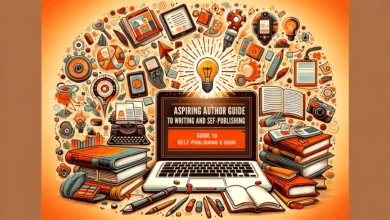What Is The Classification Of Chatgpt Within Generative Ai Models
ChatGPT took the world by storm as a breakout generative AI application when OpenAI unveiled it in late 2022. Its human-like conversational ability immediately drew comparisons to sci-fi fantasies of advanced AI. But how exactly does a system like ChatGPT fit into the broader generative AI technology landscape? What architectural innovations empower its impressive text-generation capabilities? Let’s analyze its classification to appreciate what makes this model so transformative.
The Explosive Growth of Generative AI
First, we must frame the context around the rapid recent progress in generative artificial intelligence – focused on producing novel, high-quality outputs spanning modalities like text, imagery, audio, and video automatically.
Thanks to advances in deep learning, neural networks can now learn latent representations from vast datasets of books, images or music through techniques like adversarial training, diffusion models, and autoencoders. Sampling from these latent spaces yields realistic, diverse synthetic outputs matching key statistical properties of real-world data.
From creative tools like Github Copilot that suggest source code or graphic engines rendering 3D scenes from descriptive prompts to next-generation conversational agents like Claude answering natural language queries honestly, generative AI promises to transform every information-driven industry over the next decade.
Transformers and Foundation Models: Pillars of Generative AI
Two key innovations form the bedrock of cutting-edge generative AI systems today:
1. Transformer Architectures
Introduced in 2017 by Google, transformers utilize self-attention – allowing models to learn relationships between all input tokens based on context, transcending limitations of sequential architectures to capture long-range dependencies in data.
Their flexibility has allowed language and multimodal transformers to advance computer vision, speech recognition, and natural language generation benchmarks rapidly through pre-training on massive corpora.
2. Foundation Models
Scalable across modalities using transformer encoders/decoders as their base, foundation models like GPT-3 learn general representations that transfer effectively to downstream tasks through fine-tuning instead of training bespoke models each time.
Their versatility catalyzes new applications integrating them gets easier via APIs without machine learning expertise. OpenAI’s aggressive iteration demonstratively improved capability with each version upto GPT-3.
So transformers and foundation models established the core techniques making impressive generative AI systems possible. Now let’s analyze ChatGPT specifically.
ChatGPT’s Architecture and Capabilities
Released in November 2022, ChatGPT leverages a transformer-based foundation model trained using reinforcement learning from human feedback (RLHF) to sustain coherent, relevant conversations. Specifically, its architecture consists of:
1. Improved Encoder
A transformer encoder analyzes context from prior dialog turns using self-attention feedback loops detecting connections between all input tokens to capture semantic meaning effectively.
2. Deep Reinforcement Learning
RLHF then helps associate a conversational context with appropriate responses through feedback aligned to qualities like being helpful, harmless, and honest.
3. Retrieval Augmented Decoding
Before responding, external knowledge is retrieved from curated sources to enrich contextual relevance using the REALM technique.
4. Decoder and Response Rating
A transformer decoder converts identified key tokens into readable language. Generated responses get ranked by an evaluator model ensuring quality control.
Let’s analyze how these architectural choices empower generative conversational ability specifically:
Distinct Capabilities of ChatGPT As a Generative Model
Compared to other state-of-the-art generative systems, ChatGPT shines in a few areas:
Natural Dialog Ability
Its decoding is tied tightly to contextual cues from previous chat turns and REALM-powered knowledge grounding allows human-like back-and-forth conversations gracefully.
Multitasking Across Domains
The reinforced training paradigm equips it to provide helpful guidance on diverse topics from explaining scientific concepts to advising on relationships without needing explicit domain-specific fine-tuning.
Granular Response Control
Inbuilt classifier rating responses allow targeted filtering of toxic, biased, or factually incorrect language efficiently.
Adapting to User Preferences
Interactive feedback customizes future responses to individual communication styles and preferences through clear associations.
So while Champions like DALL-E 2 and AlphaFold pioneer creative image generation and protein structure prediction specifically, ChatGPT fulfills a versatile role as an AI assistant for information seekers – identifying salient context and presenting reliable guidance helpfully.
Responsible Considerations for Chatbot Models
However, as a nascent technology, large language chatbot models still warrant ethical precautions before widespread deployment despite promising capabilities:
Potential for Toxic or Biased Responses
Due to imperfect training data, generative models may inadvertently recommend harmful actions or exhibit prejudice unconsciously despite guardrails.
Inability to Identify Misinformation
The desire to respond helpfully under uncertainty coupled with surface-level reasoning makes ChatGPT vulnerable to spreading falsehoods sincerely without adequate verification.
Lack of Memory and Consistency
With conversation state resets every few turns, users can deliberately trick ChatGPT into contradictory logic challenging reliability assessments.
By complementing external memory storage, causality checks, and transparency on confidence scores/training data, trust can be strengthened over successive iterations.
Classifying ChatGPT Among Generative AI Paradigms
Now that we’ve dissected ChatGPT’s architecture and capabilities, how exactly would we categorize such large language models concerning the broader generative AI landscape? Let’s analyze a few classification frameworks:
1. Grouping by Input-Output Modalities
A simple taxonomy of generative AI systems segments them by the types of inputs consumed and outputs produced:
- Unimodal: Text in, Text out (ChatGPT, GPT-3)
- Crossmodal: Image in, Text out – Describing scenes
- Multimodal: Text + Image in, Image out – DALL-E
So ChatGPT represents an unimodal text-to-text generative foundation model.
2. Categorization by Knowledge Utilization
Based on how systems store and surface information shared with users, generative models fall into three buckets:
- Amnesic: No persistence of facts across conversations, hallucinations likely.
- Episodic Memory: Retains user session data to reduce repetitions but still limited.
- Knowledge Enhanced: Incorporates external knowledge bases to ground responses in factual reality.
As an RLHF transformer model limited to session-based episodic memory presently, enhancements to incorporate durable memories grounded by knowledge graphs will grant ChatGPT heightened reasoning and search abilities.
3. Segmentation by Application Focus
From an industry applicability perspective, we can segment language models based on their specialized capabilities geared toward tasks like content creation, classification, reasoning, retrieval, etc:
Hence ChatGPT has attributes spanning conversational and creative models exhibiting both interactive query response fluency and lengthy text generation prowess from few shot prompts.
By supporting multipurpose use cases beyond narrow applications, generalist models like ChatGPT lower barriers to benefit from AI noticeably across more scenarios.
The Future of Conversational Generative AI
Finally, what milestones can we expect next from large language models as the subfield of conversational generative AI models keeps maturing?
Here are promising innovation frontiers on the horizon:
Multimodal Knowledge Access – Extending REALM capabilities to fuse images, videos, and structured data for richer assistance.
Long-Term Expanding Memories – Better retaining concepts, events, and preferences discussed over time while resisting false memories.
Training Dataset Diversification – Increased geographical diversity and languages with reduced biases via transparency.
Reasoning Chain Explanations – Providing complete reasoning tracing why any advice or factual claims were made to improve transparency.
Improved Cybersecurity – Enhanced veracity screens detecting social engineering attempts and policy violations automatically while explaining issues for constructive feedback.
As pioneers continue driving breakthroughs across these vectors synergistically, conversational agents promise to become ubiquitous as daily aides we interact with naturally. Much like mobile apps revolutionized accessibility over the past decade, integrating helpful conversation-powered AI could have similar widespread impacts letting humans focus on deeper intellectual pursuits.
Frequently Asked Questions About ChatGPT-like Models
Let’s wrap up by addressing some other common questions people have regarding the phenomena behind ChatGPT:
What makes ChatGPT more capable than previous conversational AI?
Key innovations include transformer architectures allowing richer contextual understanding, reinforcement learning optimizing human-aligned responses, inbuilt memory, classification, and feedback management systems.
Does ChatGPT have any business model presently?
OpenAI initially introduced ChatGTP as a free research preview without monetization. Plans involve offering tiered paid plans and API access to enterprise users wanting greater scale, support, and advanced capabilities.
What are the risks around the public launch of such models?
Potential for toxic responses based on unevenly trained foundations reflecting societal biases. Also, possibility of AI disinformation at scale if unable to distinguish misconceptions from facts reliably.
Do transformer models understand language?
While transformer architectures like GPT focused on prediction have achieved human parity on narrow textual tasks, modeling true language understanding requiring reasoning about real-world concepts and common sense remains difficult but actively researched.
How can we use ChatGPT responsibly?
By probing inconsistencies, labeling AI content transparently, monitoring system behavior post-launch, and prioritizing underserved use cases over purely commercial motives in parallel to technical progress on robustness.
The road ahead for conversational AI still warrants diligent navigation but its momentum accelerates undeniably towards revolutionizing how we gather and distribute knowledge everywhere – once adequate oversight ensures prudence prevails over peril through purposeful innovation.





